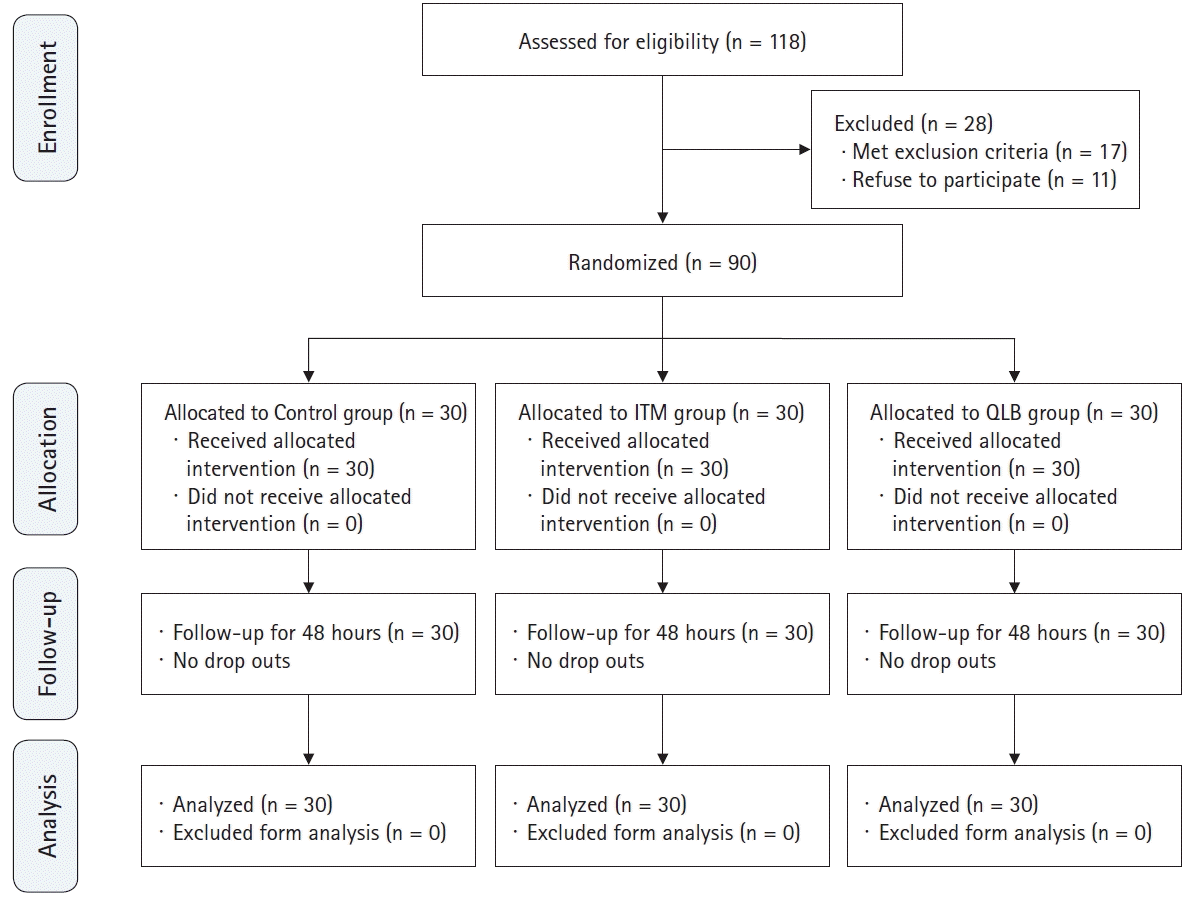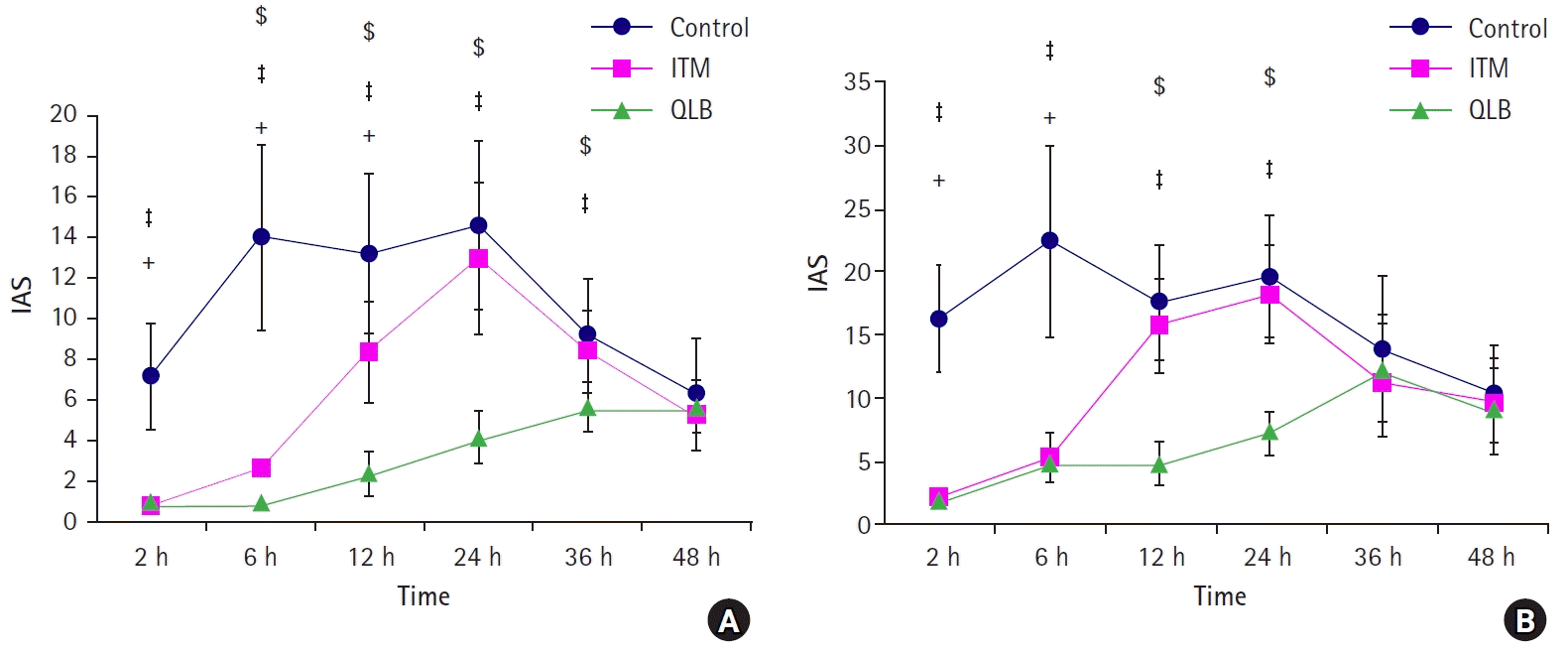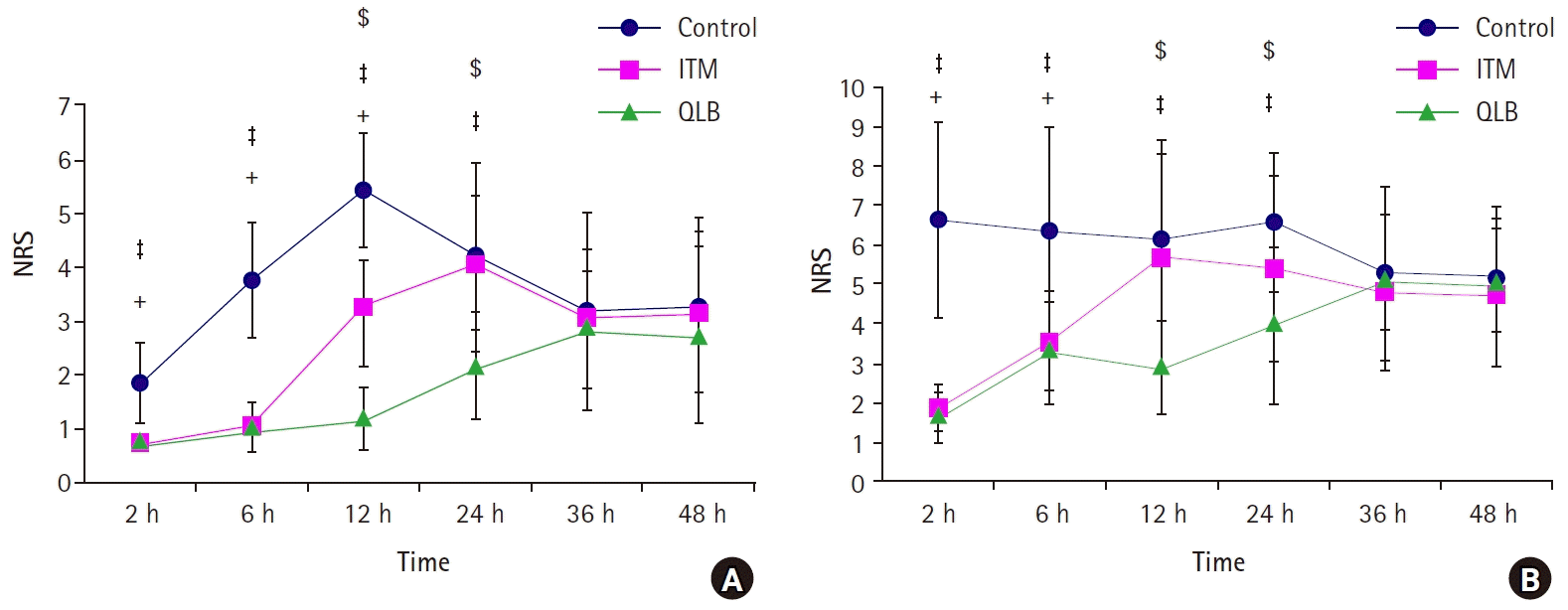1. Betrán AP, Ye J, Moller A, Zhang J, Gülmezoglu AM, Torloni MR. The Increasing trend in caesarean section rates: Global, regional and national estimates: 1990-2014. PLoS One. 2016; 11:e0148343.

2. Boerma T, Ronsmans C, Melesse DY, Barros AJD, Barros FC, Juan L, et al. Global epidemiology of use of and disparities in caesarean sections. Lancet. 2018; 392:1341–8.

3. Gadsden J, Hart S, Santos AC. Post-cesarean delivery analgesia. Anesth Analg. 2005; 101(Suppl 5):S62–9.
4. Karlström A, Engström-Olofsson R, Norbergh KG, Sjöling M, Hildingsson I. Postoperative pain after cesarean birth affects breastfeeding and infant care. J Obstet Gynecol Neonatal Nurs. 2007; 36:430–40.

5. Eisenach JC, Pan PH, Smiley R, Lavand'homme P, Landau R, Houle TT. Severity of acute pain after child¬birth, but not type of delivery, predicts persistent pain and postpartum depression. Pain. 2008; 140:87–94.

6. McMorrow RCN, Mhuircheartaigh RJN, Ahmed KA, Aslani A, Ng SC, Conrick-Martin I, et al. Comparison of transversus abdominis plane block vs spinal morphine for pain relief after Caesarean section. Br J Anaesth. 2011; 106:706–12.

7. Kerai S, Saxena KN, Taneja B. Post‑caesarean analgesia: what is new? Indian J Anaesth. 2017; 61:200–14.
8. Kanazi GE, Aouad MT, Abdallah FW, Khatib MI, Adham AM, Harfoush DW, et al. The analgesic efficacy of subarachnoid morphine in comparison with ultrasound-guided transversus abdominis plane block after cesarean delivery: a randomized controlled trial. Anesth Analg. 2010; 111:475–81.
9. Mieszkowski MM, Zawadzka EM, Tuyakov B, Mieszkowska M, Żukowski M, Waśniewski T, et al. Evaluation of the effectiveness of the quadratus lumborum block type I using ropivacaine in postoperative analgesia after a cesarean section — a controlled clinical study. Ginekol Pol. 2018; 89:89–96.

10. Blanco R, Ansari T, Girgis E. Quadratus lumborum block for postoperative pain after caesarean section: a randomised controlled trial. Eur J Anaesthesiol. 2015; 32:812–8.
11. Blanco R, Ansari T, Riad W, Shetty N. Quadratus lumborum block versus transversus abdominis plane block for postoperative pain after cesa¬rean delivery: a randomized controlled trial. Reg Anesth Pain Med. 2016; 41:757–62.

12. Pasero C. Assessment of sedation during opioid administration for pain management. J Perianesth Nurs. 2009; 24:186–90.

13. Dai F, Silverman DG, Chelly JE, Li J, Belfer I, Qin L. Integration of pain score and morphine consumption in analgesic clinical studies. J Pain. 2013; 14:767–77. e8.

14. Krohg A, Ullensvang K, Rosseland LA, Langesæter E, Sauter AR. The analgesic effect of ultrasound-guided quadratus lumborum block after cesarean delivery: a randomized clinical trial. Anesth Analg. 2018; 126:559–65.

15. Grosen K, Vase L, Pilegaard HK, Pfeiffer-Jensen M, Drewes AM. Conditioned pain modulation and situational pain catastrophizing as preoperative predictors of pain following chest wall surgery: a prospective observational cohort study. PLoS One. 2014; 9:e90185.

16. Marzouk SB, Bennasr L, Icherni I, Shili A, Touaibia M, Maghrebi H. Ultrasound-guided bilateral transversus abdominis plane block versus spinal morphine for pain relief after caesarean section. Glob Anesth Perioper Med. 2016; 2:162–5.

17. Mishriky BM, George RB, Habib AS. Transversus abdominis plane block for analgesia after cesarean delivery: a systematic review and meta-analysis. Can J Anaesth. 2012; 59:766–78.
18. Carney JJ, Lane J, Quondamatteo F, Bergin D, McDonnell JG, Laffey J. Defining the limits and the spread beyond the transversus abdominis plane block - radiological and anatomical study. Reg Anesth Pain Med. 2008; 33(Suppl 1):181.
19. Champaneria R, Shah L, Wilson MJ, Daniels JP. Clinical effectiveness of transversus abdominis plane (TAP) blocks for pain relief after caesarean section: a meta-analysis. Int J Obstet Anesth. 2016; 28:45–60.
20. Kılıç E, Bulut E. Quadratus lumborum block III for postoperative pain after percutaneous nephrolithotomy. Turk J Anaesthesiol Reanim. 2018; 46:272–5.
21. Baidya DK, Maitra S, Arora MK, Agarwal A. Quadratus lumborum block: an effective method of perioperative analgesia in children undergoing pyeloplasty. J Clin Anesth. 2015; 27:694–6.

22. La Colla L, Uskova A, Ben-David B. Single-shot quadratus lumborum block for postoperative analgesia after minimally invasive hip arthroplasty: a new alternative to continuous lumbar plexus Bblock? Reg Anesth Pain Med. 2017; 42:125–6.
23. Murouchi T, Iwasaki S, Yamakage M. Quadratus lumborum block: Analgesic effects and chronological ropivacaine concentrations after laparoscopic surgery. Reg Anesth Pain Med. 2016; 41:146–50.
24. Cardoso JM, Sá M, Reis H, Almeida L, Sampaio JC, Pinheiro C, et al. Type II quadratus lumborum block for a sub-total gastrectomy in a septic patient. Rev Bras Anestesiol. 2018; 68:186–9.

25. Kadam VR. Ultrasound-guided quadratus lumborum block as a postoperative analgesic technique for laparotomy. J Anaesthesiol Clin Pharmacol. 2013; 29:550–2.

26. Mullins CF, O’Brien C, O’Connor TC. Novel use of combination of electromyography and ultrasound to guide quadratus lumborum block after open appendicectomy. BMJ Case Rep. 2017; 2017:pii: bcr-2017-219680.

27. Wikner M. Unexpected motor weakness following quadratus lumborum block for gynaecological laparoscopy. Anaesthesia. 2017; 72:230–2.

28. Chaney MA. Side-effects of intrathecal and epidural opioids. Can J Anaesth. 1995; 42:891–903.







 PDF
PDF Citation
Citation Print
Print



 XML Download
XML Download